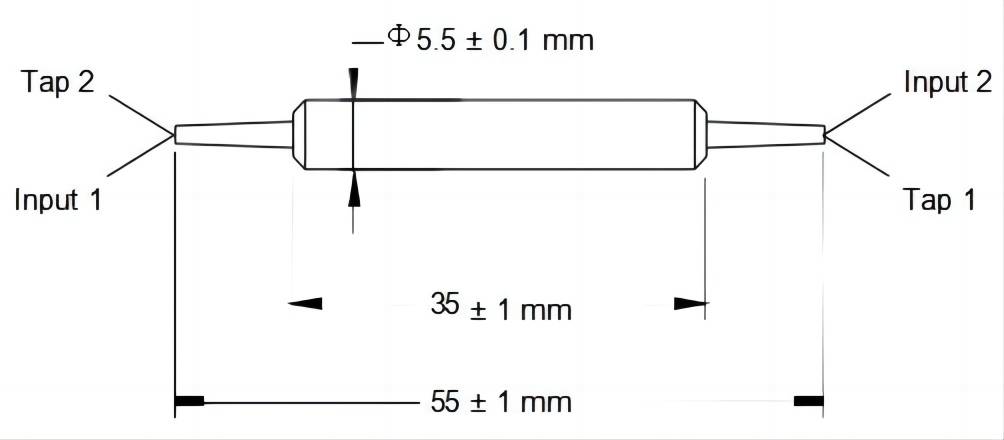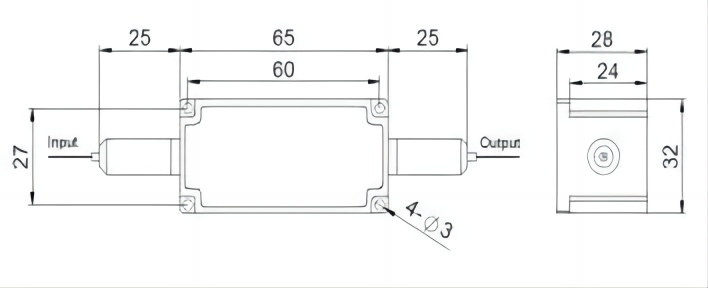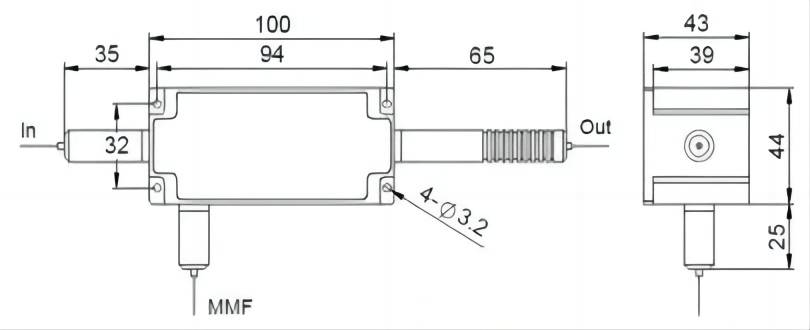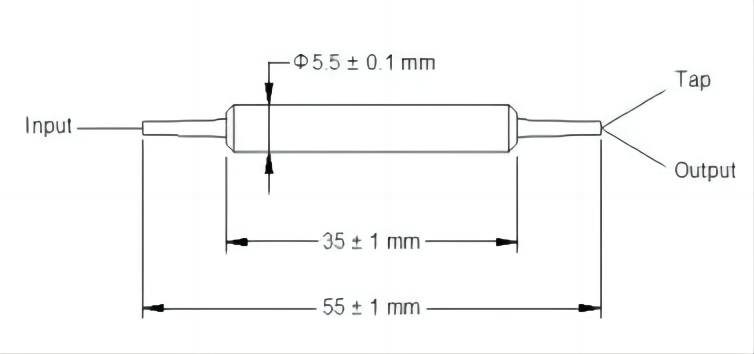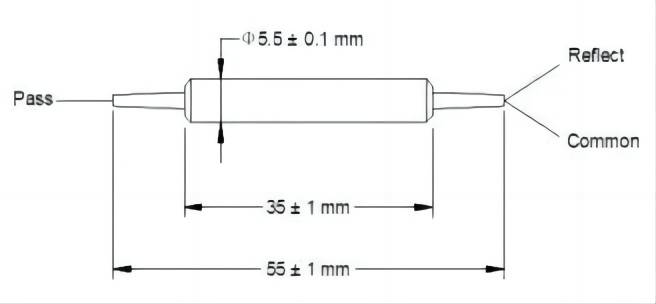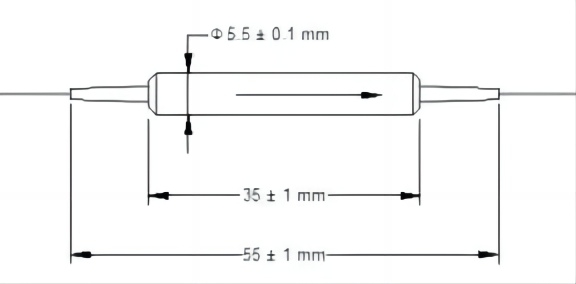How Does a Passive Optical Network (PON) Reduce Power Consumption?
With the explosive growth of global Internet traffic, the energy consumption problem of communication networks has become increasingly prominent. Traditional active networks (such as DSL and HFC) rely on a large number of active electronic devices for signal amplification and switching, resulting in high operating costs and carbon emissions. Passive Optical Network (PON), with its “passive” feature, has become one of the key technologies for reducing network energy consumption.
PON is widely used in scenarios such as Fiber-to-the-Home (FTTH) and 5G fronthaul. Its core advantage lies in reducing the use of active devices, thereby lowering overall power consumption. This article will delve into how PON achieves lower energy consumption through passive optical devices, intelligent energy-saving mechanisms, and efficient architecture design.
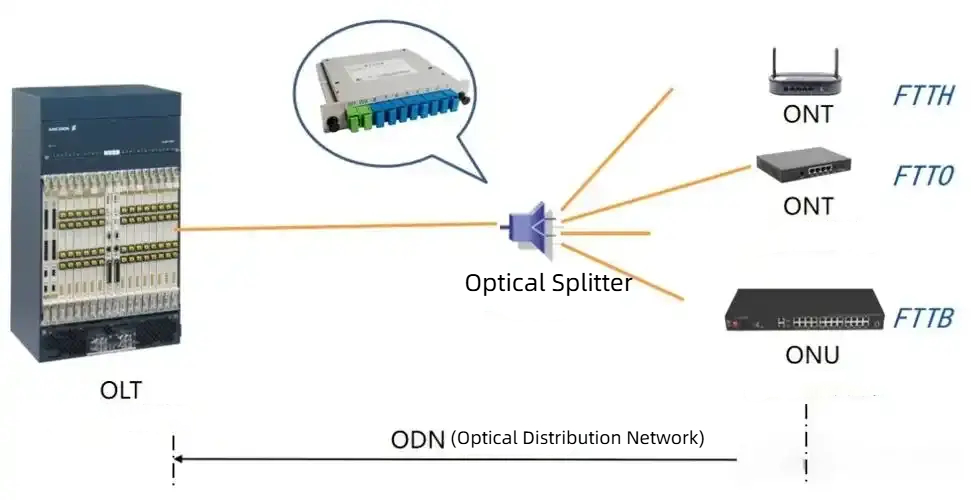
The Basic Architecture And Passive Characteristics Of PON
1. Core components of PON
PON mainly consists of the following three parts:
OLT (Optical Line Terminal): Usually deployed in the operator’s central computer room or local end. It is responsible for completing core functions such as photoelectric conversion, signal modulation, and bandwidth allocation, and is the brain of the entire PON system. An OLT device can usually support multiple PON ports, each of which is connected to multiple user terminals through a single optical fiber.
ONU/ONT (Optical Network Unit): It is a device located at the user end, responsible for converting optical signals into electrical signals and providing users with various network access services.
Optical Splitter: It is a true passive optical device in the PON system. It uses optical technology to distribute optical signals from OLT to multiple ONUs, or to aggregate the uplink signals of multiple ONUs to OLT. The optical splitter does not require additional power supply and only realizes signal distribution through physical splitting.
2. “Passive” vs “active” networks
Active networks (such as traditional Ethernet and HFC) rely on active devices such as switches and repeaters and require continuous power supply.
The passive characteristics of PON: the optical splitter does not require power supply and only relies on the natural splitting of optical signals to reduce energy consumption.
3. Energy consumption comparison with traditional networks
| Network type | Key equipment | Whether to rely on external power supply | Typical power consumption (per user) |
| DSL | DSLAM, Modem | Yes | 5-10W |
| HFC (coaxial cable) | Optical nodes, amplifiers | Yes | 10-20W |
| PON | OLT, ONU, optical splitter | Only OLT/ONU needs power supply | 1-3W |
The architectural advantages of PON enable it to significantly reduce energy consumption in long-term operation.
Key Technologies For PON To Reduce Power Consumption
1. Passive working mode of splitters
The splitter uses pure optical splitting technology, does not require power, and only uses physical splitting (such as 1:32 or 1:64) to achieve multi-user sharing of optical fiber. Compared with traditional active splitters (such as switches), this passive working mode brings significant energy-saving effects, reducing equipment power consumption by more than 90%.
For example, a PON network serving 10,000 households may only need about 160 splitters, all of which work passively; while an active network of the same size may require hundreds of active switching nodes, and the total power consumption difference can reach tens of kilowatts.
2. Centralized management of OLT
OLT uses single-fiber bidirectional (WDM) technology. One fiber can serve dozens or even hundreds of users, reducing the number of fibers and active devices. Operators can use port dormancy technology to shut down some OLT ports when the load is low to save energy. In contrast, the traditional point-to-point fiber solution requires each user to configure an independent optoelectronic conversion device, which naturally consumes more energy.
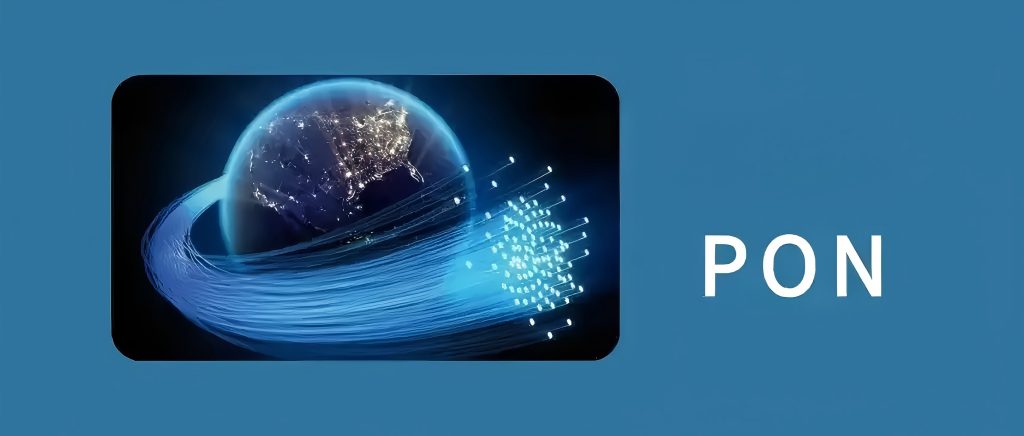
3. Intelligent energy-saving mode of ONU/ONT
PON standards (such as GPON, XGS-PON) support ONU dynamic energy-saving mechanism:
DoZE mode: When the user has no data request, the ONU enters a low-power state and only maintains basic communication.
Cyclic Sleep mode: The ONU will periodically enter a complete sleep state and only wake up in a preset time window to check whether there is downstream data. Suitable for low-traffic scenarios such as IoT, it can reduce power consumption by 30%-50%.
4. Efficient optical signal transmission technology
PON supports long-distance transmission (20-40km), which means that a single OLT can cover a larger area and reduce the number of active devices deployed.
Using high-order modulation technology (such as NRZ, PAM4), more data can be transmitted at the same optical power, effectively reducing the energy consumption per bit.
Energy Consumption Comparison Between PON And Other Access Technologies
1. PON vs DSL vs HFC
DSL: relies on copper wire transmission, has large signal attenuation, requires more repeaters, and has high power consumption per user (5-10W).
HFC: Hybrid fiber coaxial network, requires photoelectric conversion and RF amplification, with a typical power consumption of 10-20W/user.
PON: pure fiber transmission, passive splitting, typical power consumption of 1-3W/user, with significant energy-saving advantages.
2. Actual case results
China Mobile: In FTTH deployment, upgrading the original DSL network to GPON reduces energy consumption by about 40%.
European operators: After adopting XGS-PON, the power consumption of data center OLT drops by 30%.
Both cases fully demonstrate the excellent performance of PON technology in energy saving.

Further Energy-saving Optimization Of Future PON Technology
1. Next-generation PON standards (XGS-PON, 25G/50G PON)
Higher bandwidth supports more efficient data transmission and reduces energy consumption per unit flow.
Use low-power optical modules, such as Silicon Photonics, to reduce photoelectric conversion losses.
2. AI-driven dynamic power management
Predict traffic through machine learning and intelligently adjust the working mode of OLT and ONU.
For example: automatically enter deep energy-saving state during low peak hours at night.
3. Green optical devices and renewable energy applications
Develop ultra-low loss optical fiber and environmentally friendly splitters to reduce optical signal attenuation.
Some operators try to use solar energy to power OLT to further reduce grid dependence.
Conclusion
Passive optical network (PON) has greatly reduced the energy consumption of communication networks through passive optical splitting architecture, intelligent energy-saving mechanism and efficient transmission technology. Compared with traditional active networks, the power consumption per user of PON can be reduced by more than 50%, making it a key technology for “green communication”.


